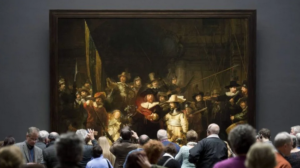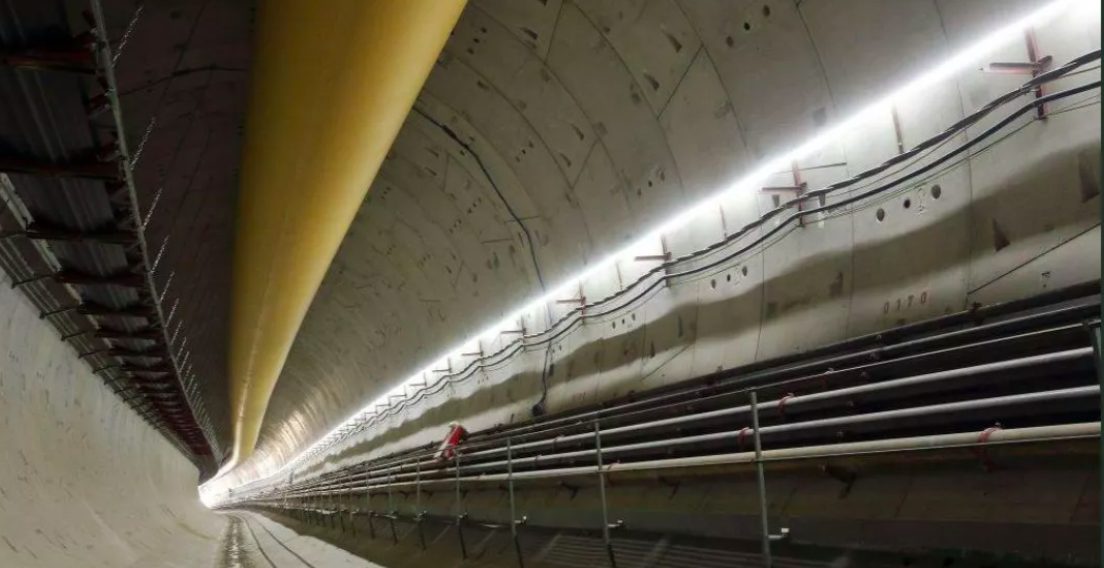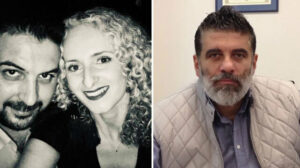It is one of the most impressive and imposing paintings by Rembrandt van Rijn, but many are unaware that the magnificent work of art on display at the Reichsmuseum in Amsterdam, entitled “Night Patrol”, was victim of “mutilation” three centuries ago.
In 1715, large strips were cut on all four sides from the giant canvas of the work by the great Dutch painter.
This act, which today would be described by some as artistic vandalism, was done because they wanted to fit the huge painting on a wall of the Amsterdam City Hall of the time.
The strips that were removed were thrown away and forever lost.
For the first time in 300 years, Rembrandt’s famed ‘The Night Watch’ is back on display with its missing parts temporarily restored using artificial intelligence https://t.co/QDKN2WTouC pic.twitter.com/b9oI5x5am1
— Reuters (@Reuters) June 23, 2021
Today, however, with the help of artificial intelligence, the Reiksmuseum Museum has been able to recreate the missing parts of the painting, which is one of its most important exhibits, and to restore the work to the form close to what Rembrandt had in mind.
According to the Daily Mail, the museum knew that the original painting was larger, thanks to a smaller copy of the same period as the original, attributed to Gerrit Landens. Based on this copy, a scientific team used artificial intelligence to reshape the missing parts. These sections were then printed and placed around the perimeter of the stunning painting in the hall of the museum that bears his name.
For the first time in 300 years The Night Watch is complete again! The #OperationNightWatch team has successfully recreated the missing pieces of Rembrandt’s masterpiece, with the help of AI.
Watch our behind the scenes video: https://t.co/Z5AKVFy23j#AkzoNobel pic.twitter.com/F3pQUbgzNl
— Rijksmuseum (@rijksmuseum) June 23, 2021
For 11 years, the Soviet Union had no weekends
To the left, the figures of two men and a boy have been added, at the point from which a 60 cm thick strip had been removed. However, the smaller parts that were removed from the right side and the top and bottom were also “restored”. “Now it can breathe”, Reiksmuseum director Taco Dibic said of the milestone project at the unveiling of the project last week. “It’s very exciting”, he said. The team that worked on the project used special printers, X-rays and digital photography, combined with data from the Landens copy, to recreate the missing pieces. A computer compared the original work to the copy, and then adapted the data to Rembrandt style.
The painting will be on display with the additional sections for the coming months at the museum, however, art lovers far away can admire the painting along with additional material for the project on the Reiksmuseum site.
The painting “Night Patrol” (full title “Militia Company of District II under the Command of Captain Frans Banninck Cocq”) is one of the most famous paintings of the golden Dutch era in painting.
It has been a “victim” of vandalism several times in the past. In 1911, a man tore the canvas of the work with a knife. In 1975, an unemployed teacher “attacked” the board with a bread knife and managed to make some large zigzag cuts. The painting was successfully restored after four years, but some traces of the attack are visible up close. On April 6, 1990, a man who had escaped from a psychiatric hospital sprayed the painting with acid. Fortunately, the quick intervention of the guards who sprayed the painting with water reduced the damage from the acid, which managed to penetrate only the glaze of the painting and so the work was fully restored.
Ask me anything
Explore related questions





